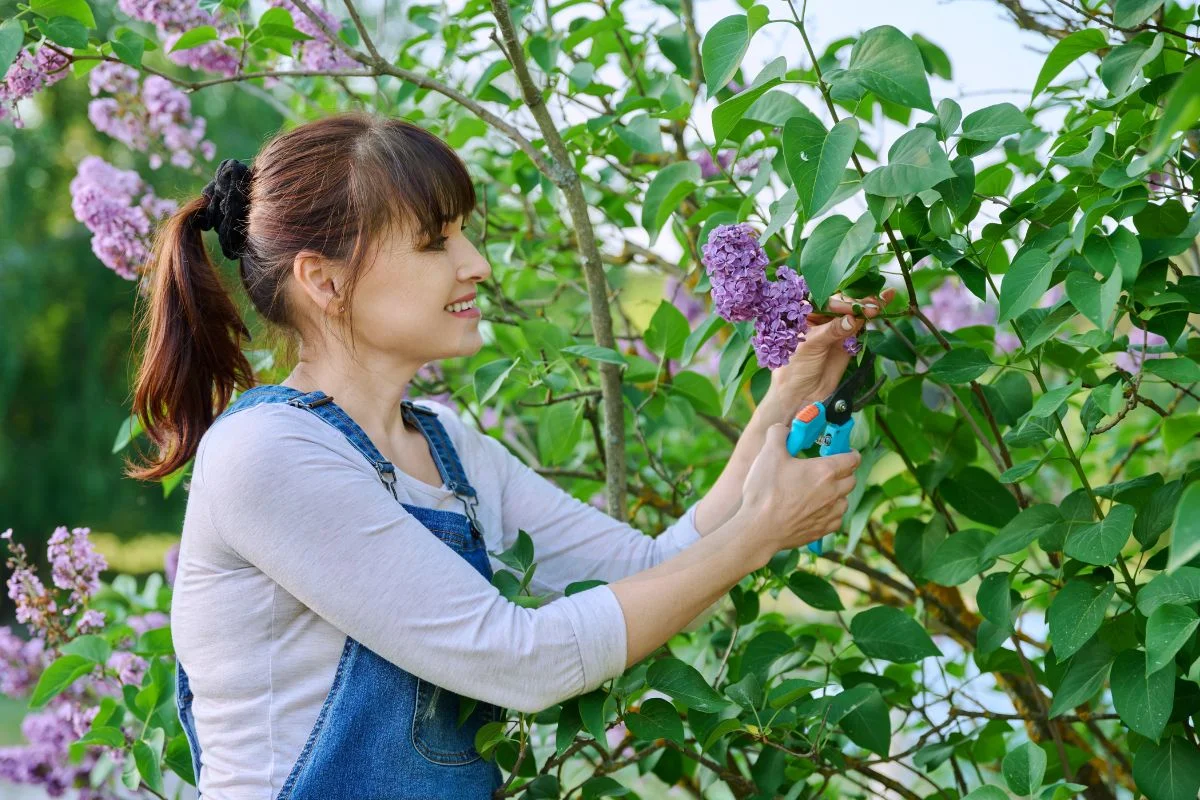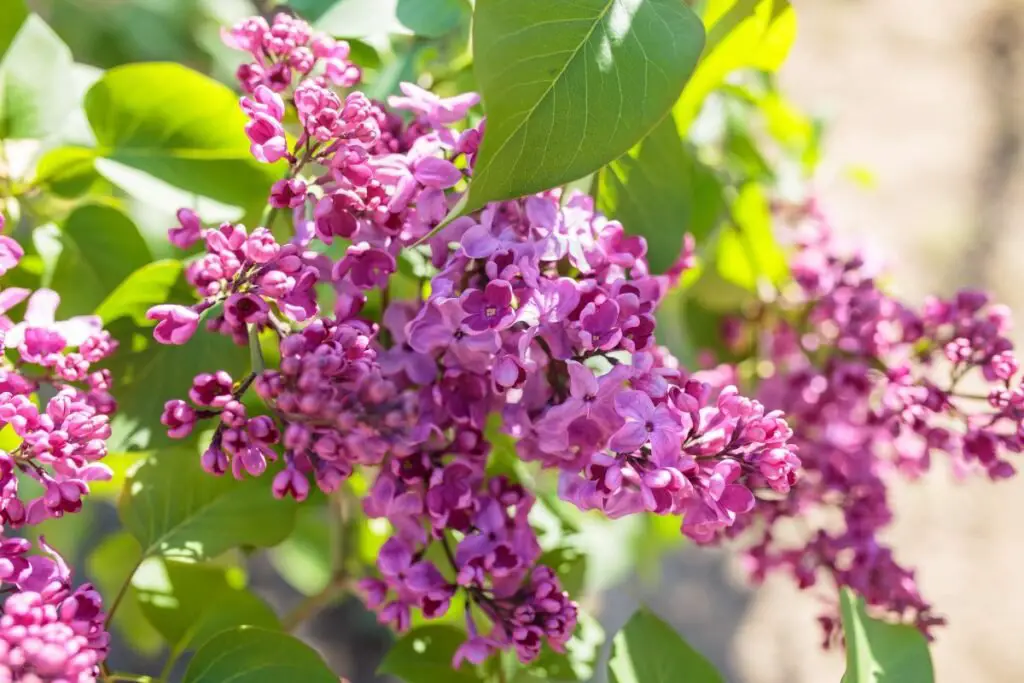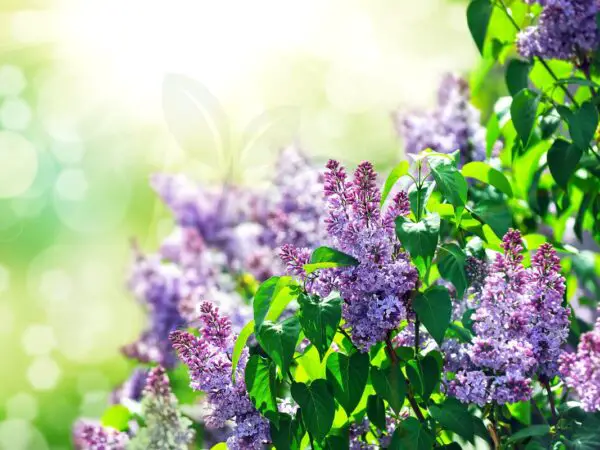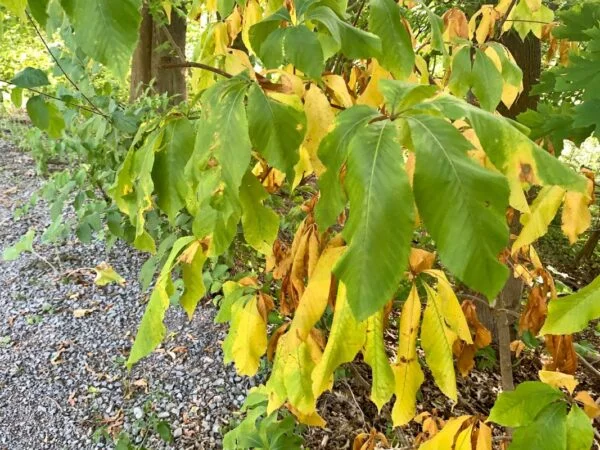
Did you know that pruning old lilac bushes can spruce up the entire plant, help new shoots, and revive their bloom and health significantly? By following simple techniques, you can transform your overgrown lilacs into vibrant and flourishing plants once again. Whether your lilac bushes are struggling to produce flowers or have become unruly, proper pruning is the key to rejuvenation.
Pruning old lilac bushes is a straightforward process that requires careful timing and technique. In this guide, we will walk you through the essential steps to effectively prune your aging lilac bushes, ensuring optimal growth and abundant blooms by trimming stems and shoots after years. From identifying the right time to prune to mastering the art of shaping your bushes, we've got you covered with expert tips and tricks.
Key Takeaways
- Understand the different techniques for pruning old lilac bushes to promote healthy growth and abundant flowering.
- Prepare your lilac bushes by ensuring you have the right tools and knowledge before starting the pruning process.
- Utilize proper pruning techniques such as removing dead wood, crossing branches, and shaping the lilac for optimal growth.
- Manage large lilac bushes by selectively removing older branches to encourage new growth and maintain a balanced shape.
- Consider rejuvenation pruning for overgrown or neglected lilac bushes to revitalize their health and appearance.
- After pruning, focus on proper maintenance tasks like watering, fertilizing, and monitoring for pests or diseases to ensure the continued health of your lilac bushes.
Understanding Lilac Pruning
Importance
Pruning old lilac bushes is crucial to their health and appearance. Regular pruning helps rejuvenate overgrown lilacs by promoting new growth. Maintaining lilacs through proper pruning techniques offers benefits like improved flowering and overall plant vigor.
Best Time
The ideal period for pruning old lilac bushes is in late winter when the plants are dormant. March or early April is recommended for effective pruning as it allows new growth to emerge without risking damage to developing buds. Timing plays a significant role in successfully rejuvenating overgrown lilacs.
Tools Needed
Essential tools for pruning old lilac bushes include sharp pruners, loppers, and a pruning saw. Using clean tools helps prevent the spread of diseases among plants. Having the right tools not only makes the process easier but also ensures more efficient and precise cuts.
Preparing Your Lilac
Inspection
Inspect old lilac bushes by looking for signs of overgrowth and aging to determine pruning needs. Assess the shrub's condition before starting the pruning process to ensure effectiveness.
Identify overgrowth in lilac bushes through dense clusters of branches and limited airflow within the bush. Look for signs of aging like woody stems and reduced flowering capacity.
Understanding the importance of assessing your lilac bush is crucial before beginning pruning. By evaluating its current state, you can tailor the pruning process to suit its specific needs.
Cleaning Area
Discover how clearing the area around lilac bushes before pruning can enhance the process. A clean workspace facilitates easy access to branches and ensures safety during pruning.
A clutter-free environment around your lilac bush prevents accidents and injuries during the pruning process. Removing debris and obstacles makes it easier to maneuver around the bush safely.
Cleaning the area around your lilac bush is essential for effective and safe pruning. It allows you to work efficiently without any hindrances, ensuring a successful outcome.
Pruning Techniques
Basic Cuts
When pruning old lilac bushes, it is essential to master the techniques of basic cuts. Make precise and clean cuts to ensure the health and vitality of your lilacs. By focusing on accuracy, you can encourage new growth and flowering in these beautiful shrubs.
- Ensure each cut is made at a slight angle to prevent water from collecting on the surface.
- Cut just above a bud or junction to promote healthy regrowth and branching in the lilac bush.
Understanding the significance of precision and care when executing basic cuts will result in vibrant and flourishing lilac bushes.
Thinning Method

To enhance air circulation around old lilac bushes, consider employing the thinning method. This technique involves selectively removing branches to reduce density and allow for better airflow within the shrub. By thinning out excess growth, you can stimulate the development of fresh shoots and blossoms.
- Thinning promotes light penetration, reducing the risk of diseases caused by poor air circulation.
- It helps maintain an optimal balance between old and new growth, ensuring a healthy lilac bush.
By embracing thinning as part of your pruning routine, you can enjoy a rejuvenated and thriving lilac garden.
Heading Back
Incorporating heading back cuts into your pruning regimen can significantly impact the structure and appearance of lilac bushes. This method involves trimming back certain branches to encourage lateral branching and denser growth patterns. By strategically heading back select stems, you can shape your lilacs into desired forms while promoting vigorous new growth.
- Heading back stimulates dormant buds along pruned branches, leading to increased foliage and blooms.
- It aids in rejuvenating older shrubs by invigorating them with fresh growth points.
Embracing heading back as a pruning technique allows you to sculpt your lilac bushes into visually appealing shapes while fostering their overall health and vitality.
Large Lilac Management
Assessing Size
Understanding the importance of assessing the size of old lilac bushes is crucial before pruning. Determining the appropriate height and shape for pruning purposes ensures a successful rejuvenation process. Assessing size helps achieve the desired results by guiding the pruning strategy effectively.
To assess the size, start by examining the overall height and spread of the lilac bush. Consider its current shape and visualize how you want it to look after pruning. This evaluation step is vital for planning the pruning approach accurately.

Step-by-Step Approach
Follow a systematic approach to prune old lilac bushes effectively. Begin by removing any dead or diseased branches to promote healthy growth. Next, trim back overgrown branches to enhance air circulation within the bush.
After initial trimming, focus on shaping the lilac bush by cutting back branches that disrupt its overall appearance. Finish by giving the bush a final inspection to ensure a balanced and aesthetically pleasing look.
Rejuvenation Pruning
When Necessary
Recognize overgrowth, disease, or poor flowering as signs that old lilac bushes require pruning. Look for new growth and scion near the graft union. Timely intervention is crucial to maintain the health of lilac bushes.
Process Overview
Understand the stages and techniques involved in rejuvenating overgrown lilacs. Each step, from identifying areas for cutting to shaping new growth, plays a vital role in rejuvenation. Pruning contributes significantly to the overall health and vitality of lilac bushes.
Maintenance After Pruning
Watering
Proper watering is crucial post maintenance pruning for old lilac bushes. Ensure adequate moisture for new growth. Water helps the plants recover from the stress of pruning.
Fertilizing
Fertilizing old lilac bushes after maintenance pruning offers numerous benefits. Choose the right fertilizer to promote healthy growth. Essential nutrients aid in the recovery process after pruning.
Mulching
Mulching plays a vital role in supporting old lilac bushes post maintenance pruning. It retains moisture, regulates soil temperature, and protects roots. This process enhances overall plant health.
Common Mistakes
Over Pruning
When pruning old lilac bushes, it's crucial to avoid over-pruning as it can harm the shrub. Excessive cutting can weaken the plant, leading to stunted growth and fewer blooms. Moderation and balance are key to maintaining the lilac's health.
Pruning too much can stress the lilac bush, making it vulnerable to diseases and pests. The shrub needs some of its older branches for nutrient storage and energy production. Cutting them excessively can disrupt this balance, affecting overall vitality.
Wrong Timing
Pruning old lilac bushes at the wrong time can have detrimental effects on their health and blooming cycle. Timing is crucial for ensuring that the plant has enough time to recover before the next growing season. Improper pruning can lead to flower bud removal and reduced flowering.
Pruning in late summer or fall can remove flower buds that have already formed for the next year. This mistake can result in a significant decrease in blooming during the following spring. Following a recommended pruning schedule ensures that you don't interfere with the lilac's natural growth cycle.
Lilac Health Monitoring
Pest Control
To protect old lilac bushes post-pruning, regularly inspect for pests like aphids, spider mites, and borers. Implement organic solutions such as neem oil or insecticidal soap.
Identify common lilac pests by checking for distorted leaves or visible insects. Prevent infestations by maintaining plant health and cleanliness.
Monitoring for pests is crucial to preserve the vitality of lilacs. Act promptly to prevent damage from escalating.
Disease Prevention
After pruning, avoid overwatering to prevent diseases like powdery mildew or root rot in lilac bushes. Prune properly to promote air circulation and reduce disease risk.
Recognize signs of disease such as discolored spots or wilting foliage. Take preventive measures like removing infected plant parts.
Maintaining good hygiene practices includes disinfecting tools between pruning sessions and providing adequate sunlight for lilacs.
Yearly Pruning Plan
Schedule Creation
Creating a pruning schedule for old lilac bushes is essential to their health and vitality. Understanding the frequency and timing of pruning is crucial. A consistent schedule promotes longevity and ensures the bushes remain healthy year after year.
- Prune lilac bushes right after they finish blooming in late spring or early summer.
- Aim to prune every year to remove dead wood, improve air circulation, and encourage new growth.
- Avoid heavy pruning, as it can reduce flowering the following year.
Adjustments
Adjusting your pruning techniques to suit each individual lilac bush is necessary for optimal results. Adapting the approach based on specific growth patterns or conditions ensures the best outcome. Flexibility and keen observation during pruning are key to maintaining healthy lilac bushes.
- Assess each bush's shape and size before pruning to determine the best approach.
- Trim back any crossing branches or those growing towards the center of the bush.
- Make adjustments based on the overall health and vigor of the plant.
Summary
You've learned the ins and outs of pruning old lilac bushes, from understanding the process and preparing your plants to mastering the right techniques and avoiding common mistakes. Remember, regular maintenance and monitoring are key to keeping your lilacs healthy and vibrant. With a yearly pruning plan in place, you can ensure your lilac bushes flourish year after year. Now it's time to put your knowledge into action and give those old lilac bushes the care they deserve. Get out there, grab your gardening tools, and start pruning for healthier, more beautiful lilacs!
Frequently Asked Questions
How often should I prune my old lilac bushes?
Prune your old lilac bushes immediately after flowering. This timing allows the plant to set buds for the following year. Avoid pruning in late summer or fall, as this can remove potential flower buds.
Can I use regular hedge trimmers to prune my large lilac bushes?
Avoid using regular hedge trimmers on large lilac bushes. Instead, opt for sharp pruning shears or loppers to make clean cuts. Regular hedge trimmers can result in rough cuts that may harm the plant's growth and overall health.
What are some common mistakes to avoid when pruning lilac bushes?
Common mistakes when pruning lilac bushes include cutting them back too severely, pruning at the wrong time of year, and neglecting to remove dead or diseased branches. Always ensure you follow proper pruning techniques to maintain the health and beauty of your lilacs.
How do I know if my lilac bushes are healthy after pruning?
Monitor your lilac bushes for signs of new growth, vibrant foliage, and abundant blooms after pruning. Healthy plants will exhibit vigorous growth and produce flowers regularly. Keep an eye out for any signs of disease or pest infestations and address them promptly.
Is it necessary to have a yearly pruning plan for my lilac bushes?
Having a yearly pruning plan for your lilac bushes is essential to promote healthy growth and abundant flowering. A well-thought-out plan ensures you prune at the right time and using proper techniques, leading to strong, beautiful lilac bushes year after year.
Image Source: Paid image from CANVA





